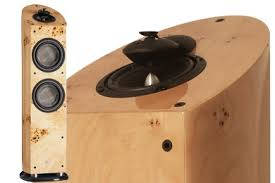bigshot
Headphoneus Supremus
Ah! So they aren't typical dipoles or bipoles. What is the effect of more refections off the front wall? Does that create coupling, or does the out of phase info cancel that? I would imagine speakers like that do best in the middle of the floor of an open room where the back side can't reflect off the front wall. I had a friend with those Magnipans once. He had to divorce his wife to clear out the living room so his speakers worked properly! They sounded OK but the bass was very thin. Bass is the one thing that sounds full in headphones and isn't anchored between the ears.
Which are the ones that fire in phase front and back? I remember back in the 70s, there was a fad to put rear facing tweeters in studio monitors. I have a set that have that. I turned them off because it messed with the high frequencies. I tend to prefer higher frequencies directional, and lower ones not as directional. I like non directionality and wide dispersion in the rear where there is no center channel to bridge the gap, and horn loaded in the center channel up front to anchor the vocals naturally. That sounds more like the singer is in the room with me. It seems to me that if you are going to fill in, it's better to do that on the sides and rear and not mess with the precise imaging of the soundstage. Spread out sound would ruin a Culshaw opera.
Which are the ones that fire in phase front and back? I remember back in the 70s, there was a fad to put rear facing tweeters in studio monitors. I have a set that have that. I turned them off because it messed with the high frequencies. I tend to prefer higher frequencies directional, and lower ones not as directional. I like non directionality and wide dispersion in the rear where there is no center channel to bridge the gap, and horn loaded in the center channel up front to anchor the vocals naturally. That sounds more like the singer is in the room with me. It seems to me that if you are going to fill in, it's better to do that on the sides and rear and not mess with the precise imaging of the soundstage. Spread out sound would ruin a Culshaw opera.
Last edited:






















